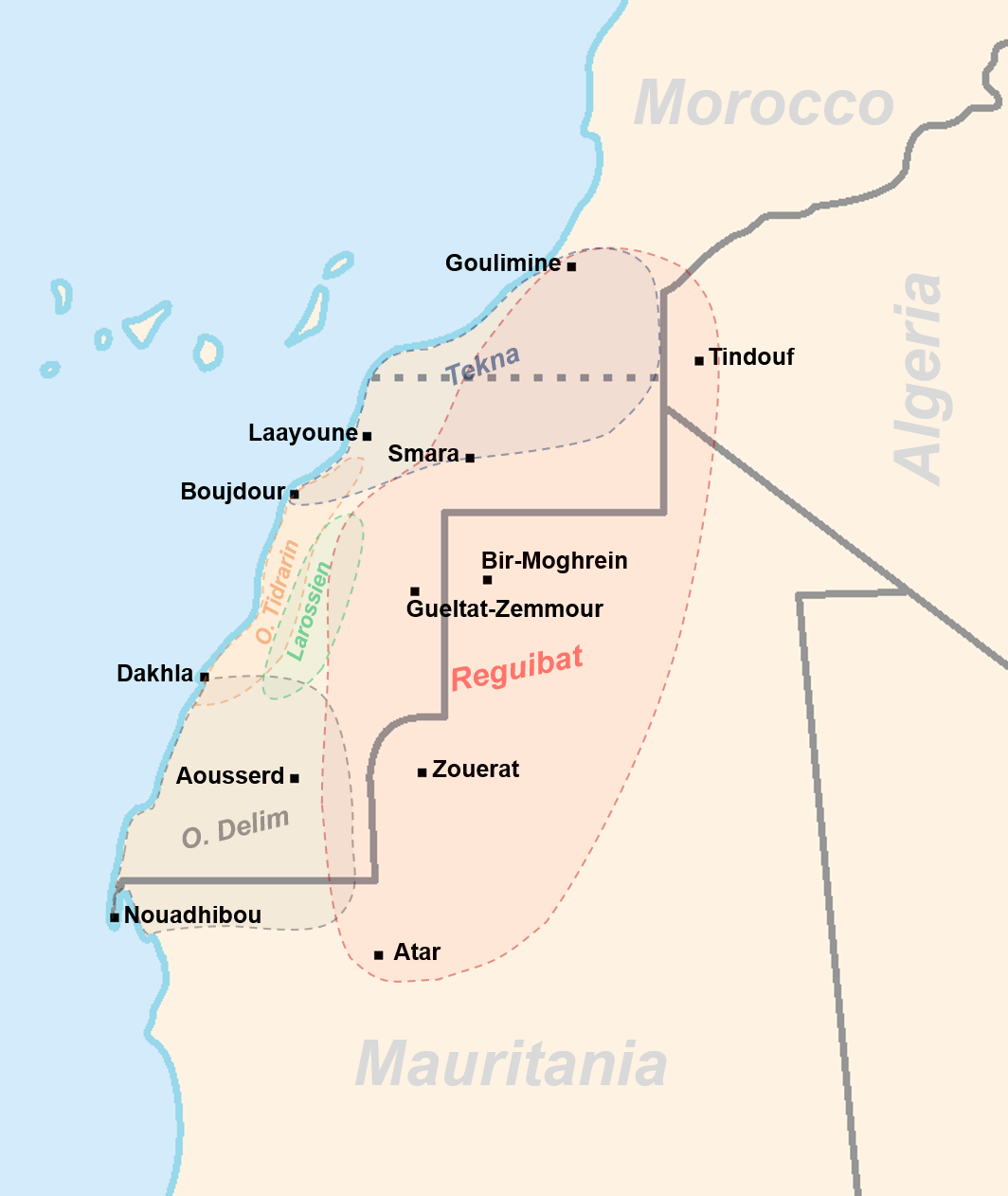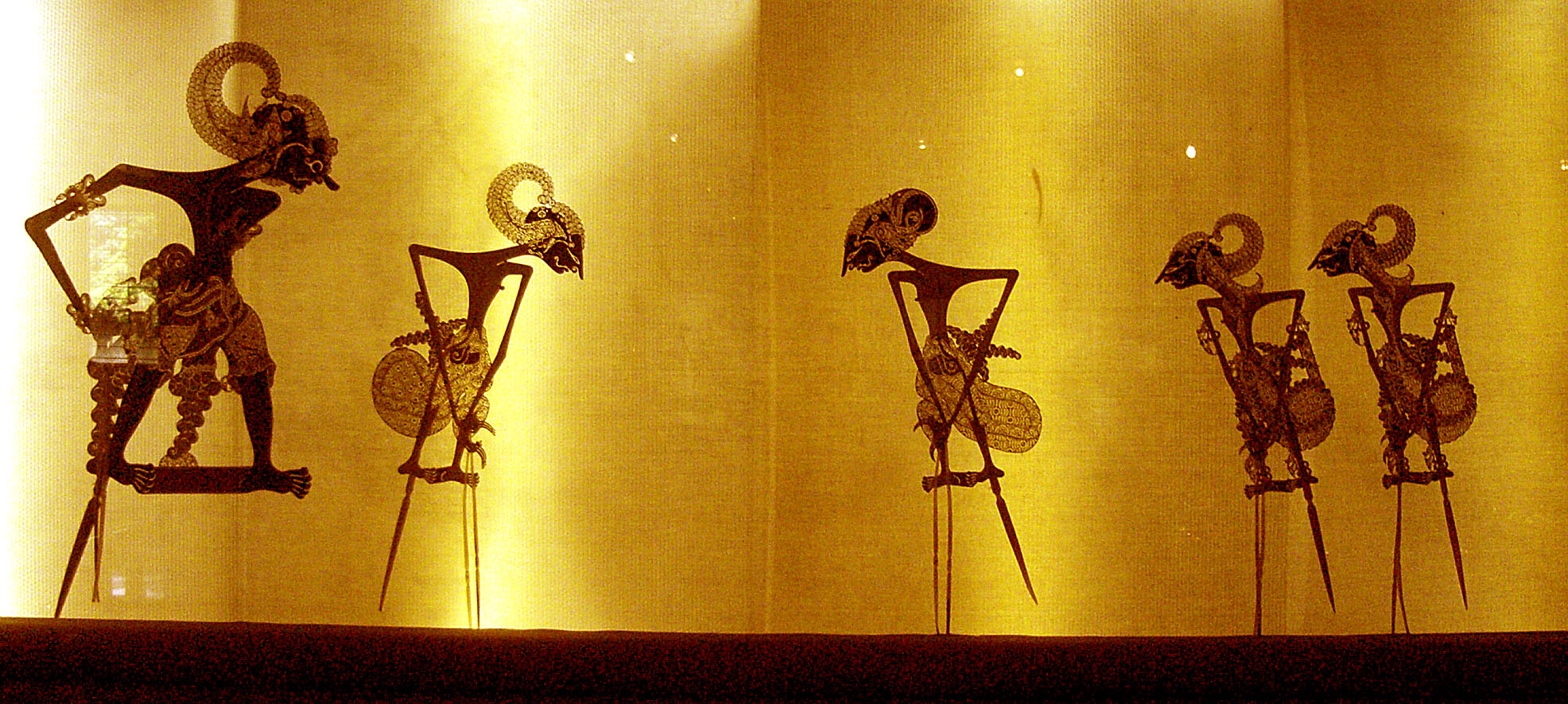|
Oulad Tidrarin
The Oulad Tidrarin ( ar, أولاد تيدرارين) is a Sahrawi tribe of Arab origins, formerly considered to be of Ansar status. They speak Hassaniya Arabic. They are Muslims, belonging to the Maliki school of Sunni Islam. They live mainly in Western Sahara but also in Morocco and Mauritania. Origins The Oulad Tidrarin is one of the oldest Arab tribes that settled the Saguia el-Hamra and Río de Oro areas of Northwest Africa, their original home. Many live in the Cape Bojador and the coastline of the south of Morocco, some on the coast of Saguia el-Hamra and some branches live in the south and east of Mauritania. There are some members of the Uladsliman and Lidadsa in subgroups in Mali. The name Tidrarin is Berber and means 'small mountains'. It is the diminutive form of ("mountains"). Religious activism The tribe has established centres for the spread of Islamic culture, particularly along the Atlantic coast region. They have received recognition from the Moroccan sultan ... [...More Info...] [...Related Items...] OR: [Wikipedia] [Google] [Baidu] |
Sahrawi People
The Sahrawi, or Saharawi people ( ar, صحراويون '; es, Saharaui), are an ethnic group and nation native to the western part of the Sahara desert, which includes the Western Sahara, southern Morocco, much of Mauritania, and along the southwestern border of Algeria. They are of mixed Berber, Arab and Black African descent. As with most peoples living in the Sahara, the Sahrawi culture is a mix of Arab and indigenous African elements. The modern Sahrawi culture consists of a Berber core and considerable Arab influences. Sahrawis are composed of many tribes and are largely speakers of the Hassaniya dialect of Arabic. Etymology The Arabic word ' literally means "Inhabitant of the Desert". The word Sahrawi is derived from the Arabic word ' (), meaning desert. A man is called a "Sahrawi", and a woman is called a "Sahrawiya". In other languages it is pronounced in similar or different ways: * Berber: ''Aseḥrawi'' or ''Aneẓrofan'' * English: ''Sahrawi'' or ''Sahar ... [...More Info...] [...Related Items...] OR: [Wikipedia] [Google] [Baidu] |
Mali
Mali (; ), officially the Republic of Mali,, , ff, 𞤈𞤫𞤲𞥆𞤣𞤢𞥄𞤲𞤣𞤭 𞤃𞤢𞥄𞤤𞤭, Renndaandi Maali, italics=no, ar, جمهورية مالي, Jumhūriyyāt Mālī is a landlocked country in West Africa. Mali is the eighth-largest country in Africa, with an area of over . The population of Mali is million. 67% of its population was estimated to be under the age of 25 in 2017. Its capital and largest city is Bamako. The sovereign state of Mali consists of eight regions and its borders on the north reach deep into the middle of the Sahara Desert. The country's southern part is in the Sudanian savanna, where the majority of inhabitants live, and both the Niger and Senegal rivers pass through. The country's economy centres on agriculture and mining. One of Mali's most prominent natural resources is gold, and the country is the third largest producer of gold on the African continent. It also exports salt. Present-day Mali was once part of t ... [...More Info...] [...Related Items...] OR: [Wikipedia] [Google] [Baidu] |
Reguibat
The Reguibat ( ar, الرقيبات; variously transliterated ''Reguibate'', ''Rguibat'', ''R'gaybat'', ''R'gibat'', ''Erguibat'', ''Ergaybat'') is a Sahrawi tribe of Sanhaja- Berber origins. The Reguibat speak Hassaniya Arabic, and are Arabized in culture. They claim descent from Sidi Ahmed Rguibi, who lived in the Saguia el-Hamra region in the 16th century. They also believe that they are, through him, a chorfa tribe, i.e. descendants of Muhammad. Religiously, they belong to the Maliki school of Sunni Islam. History Initially an important Arabic zawiya or religious tribe with a semi-sedentary lifestyle, the Reguibat gradually turned during the 18th century towards camel-rearing, raiding and nomadism, in response attacks from neighbouring tribes which provoked them into taking up arms and leaving the subordinate position they had previously held. This started a process of rapid expansion, and set the Reguibat on the course towards total transformation into a traditional w ... [...More Info...] [...Related Items...] OR: [Wikipedia] [Google] [Baidu] |
Oulad Delim
The Oulad Delim () are a Bedouin Sahrawi people, Sahrawi tribe of Arabs, Arab descent which originated in Yemen. They are descended from Delim bin Hassan, who was from the Maqil, Ma'qili tribe of Beni Ḥassān, Beni Hassan which settled in the Western Sahara, Sahara in the 12th century. They were formerly considered of Hassane status i.e. part of the ruling warrior stratum. The Oulad Delim speak Hassaniya Arabic, a Bedouin Arabic, Bedouin dialect which is very close to pure classical Arabic. They traditionally live in the southern regions of Western Sahara (Río de Oro), especially around the city of Dakhla, Western Sahara, Dakhla. They have extensive tribal connections with northern Mauritanian tribes. They are Muslims, adhering to the Maliki school of Sunni Islam. Their traditional lifestyle was nomadic, based on camel herding. They were active in resisting Europe colonialism, colonial advances during the 19th century, but after Spain consolidated its hold over Spanish Sahara, m ... [...More Info...] [...Related Items...] OR: [Wikipedia] [Google] [Baidu] |
Banu Hilal
The Banu Hilal ( ar, بنو هلال, translit=Banū Hilāl) was a confederation of Arabian tribes from the Hejaz and Najd regions of the Arabian Peninsula that emigrated to North Africa in the 11th century. Masters of the vast plateaux of the Najd, they enjoyed a somewhat infamous reputation, possibly owing to their relatively late (for the Arabian tribes) conversion to Islam and accounts of their campaigns in the borderlands between Iraq and Syria. When the Fatimid Caliphate became masters of Egypt and the founders of Cairo in 969, they hastened to confine the unruly Bedouin in the south before sending them to Central North Africa (Libya, Tunisia and Algeria) and then to Morocco. Origin According to Arab genealogists, the Banu Hilal were a sub-tribe of the Mudar tribal confederation, specifically of the Amir ibn Sa'sa'a, and their progenitor was Hilal. According to traditional Arab sources, their full genealogy was the following: Hilāl ibn ''ʿ''Āmir ibn Ṣaʿ� ... [...More Info...] [...Related Items...] OR: [Wikipedia] [Google] [Baidu] |
Maliq
Maliq ( sq-definite, Maliqi) formerly known as Malik, is a town and a municipality in Korçë County of eastern Albania. It is the smaller of two cities in the district, the other being Korçë, southeast of Maliq. The current enlarged municipality was formed at the 2015 local government reform by the merger of the former administrative units of Gorë, Libonik, Maliq, Moglicë, Pirg, Pojan and Vreshtas. The seat of the municipality is the town Maliq. The total population is 41,757 (2011 census), in a total area of 656.89 km2. The population of the former municipality at the 2011 census was 4,290. The municipal unit consists of the town Maliq and the villages Kolanec, Goce, Gjyras, Bickë, Fshat Maliq and Plovisht. History The city of Malqi contains early Bronze Age archaeological sites, which offer evidence of cultural continuity of early Bronze Age peoples in the Balkans. The archaeological site of Maliq IIIa shows signs of pottery ware designs influenced by pottery styles in ... [...More Info...] [...Related Items...] OR: [Wikipedia] [Google] [Baidu] |
Beni Hassan
is a Japanese R&B singer, who debuted in 2004 under the Avex Trax label. In 2008, Arashiro left Avex Trax and transferred to Universal Music Japan where she started to perform as simply Beni (stylized as BENI). She was initially best known for her 2004 single "Here Alone," though later singles after her move to Universal (such as " Mō Ichi do..." with Dohzi-T, " Mō Nido to..." and " Kiss Kiss Kiss") have surpassed this initial hit. Life and career Start of her career Born in Okinawa, she moved to San Diego, California and then Yokohama. Her mother is Japanese and her father is American of European descent. She was influenced by Namie Amuro, Alicia Keys and her father's favorite singer Janet Jackson. She graduated from Nile C. Kinnick High School in Yokosuka Naval Base, Japan. She majored in Sociology at Sophia University. From a young age she wanted to become a singer and because of her musical parents she took up piano. Because her parents were living overseas she was t ... [...More Info...] [...Related Items...] OR: [Wikipedia] [Google] [Baidu] |
Alabobat
The Oulad Tidrarin ( ar, أولاد تيدرارين) is a Sahrawi tribe of Arab origins, formerly considered to be of Ansar status. They speak Hassaniya Arabic. They are Muslims, belonging to the Maliki school of Sunni Islam. They live mainly in Western Sahara but also in Morocco and Mauritania. Origins The Oulad Tidrarin is one of the oldest Arab tribes that settled the Saguia el-Hamra and Río de Oro areas of Northwest Africa, their original home. Many live in the Cape Bojador and the coastline of the south of Morocco, some on the coast of Saguia el-Hamra and some branches live in the south and east of Mauritania. There are some members of the Uladsliman and Lidadsa in subgroups in Mali. The name Tidrarin is Berber and means 'small mountains'. It is the diminutive form of ("mountains"). Religious activism The tribe has established centres for the spread of Islamic culture, particularly along the Atlantic coast region. They have received recognition from the Moroccan sultan ... [...More Info...] [...Related Items...] OR: [Wikipedia] [Google] [Baidu] |
OULAD Sidiasin Ben Aalilaassam
The Oulad Tidrarin ( ar, أولاد تيدرارين) is a Sahrawi tribe of Arab origins, formerly considered to be of Ansar status. They speak Hassaniya Arabic. They are Muslims, belonging to the Maliki school of Sunni Islam. They live mainly in Western Sahara but also in Morocco and Mauritania. Origins The Oulad Tidrarin is one of the oldest Arab tribes that settled the Saguia el-Hamra and Río de Oro areas of Northwest Africa, their original home. Many live in the Cape Bojador and the coastline of the south of Morocco, some on the coast of Saguia el-Hamra and some branches live in the south and east of Mauritania. There are some members of the Uladsliman and Lidadsa in subgroups in Mali. The name Tidrarin is Berber and means 'small mountains'. It is the diminutive form of ("mountains"). Religious activism The tribe has established centres for the spread of Islamic culture, particularly along the Atlantic coast region. They have received recognition from the Moroccan sultan ... [...More Info...] [...Related Items...] OR: [Wikipedia] [Google] [Baidu] |
Islamic Culture
Islamic culture and Muslim culture refer to cultural practices which are common to historically Islamic people. The early forms of Muslim culture, from the Rashidun Caliphate to the early Umayyad period and the early Abbasid period, were predominantly Arab, Byzantine, Persian and Levantine. With the rapid expansion of the Islamic empires, Muslim culture has influenced and assimilated much from the Persian, Egyptian, North Caucasian, Turkic, Mongol, Indian, Bangladeshi, Pakistani, Malay, Somali, Berber, Indonesian, and Moro cultures. Islamic culture generally includes all of the practices which have developed around the religion of Islam. There are variations in the application of Islamic beliefs in different cultures and traditions. Language and literature Arabic Arabic literature ( ar, الأدب العربي / ALA-LC: ''al-Adab al-'Arabī'') is the writing, both prose and poetry, produced by writers in the Arabic language. The Arabic word used for literature is ''" A ... [...More Info...] [...Related Items...] OR: [Wikipedia] [Google] [Baidu] |
Diminutive
A diminutive is a root word that has been modified to convey a slighter degree of its root meaning, either to convey the smallness of the object or quality named, or to convey a sense of intimacy or endearment. A (abbreviated ) is a word-formation device used to express such meanings. In many languages, such forms can be translated as "little" and diminutives can also be formed as multi-word constructions such as " Tiny Tim". Diminutives are often employed as nicknames and pet names when speaking to small children and when expressing extreme tenderness and intimacy to an adult. The opposite of the diminutive form is the augmentative. Beyond the ''diminutive form'' of a single word, a ''diminutive'' can be a multi-word name, such as "Tiny Tim" or "Little Dorrit". In many languages, formation of diminutives by adding suffixes is a productive part of the language. For example, in Spanish can be a nickname for someone who is overweight, and by adding an suffix, it becomes which ... [...More Info...] [...Related Items...] OR: [Wikipedia] [Google] [Baidu] |



